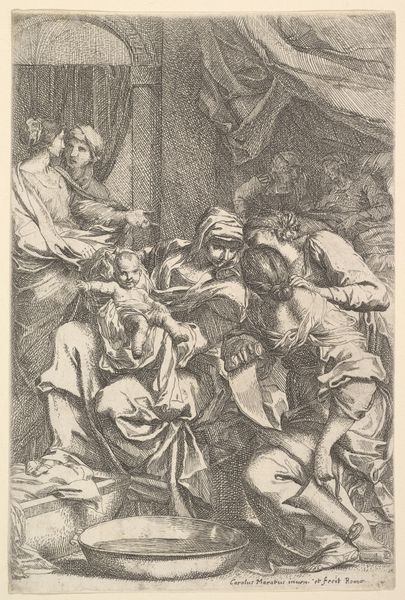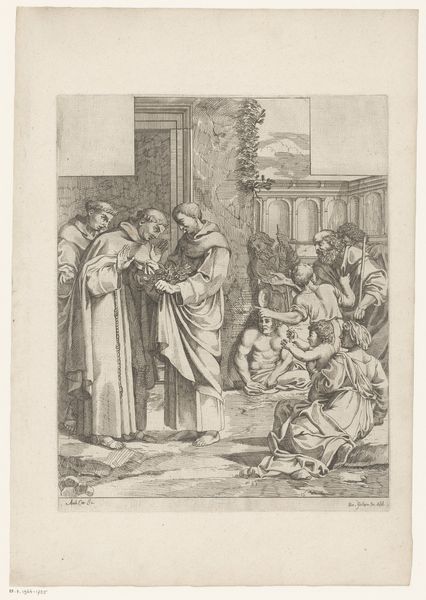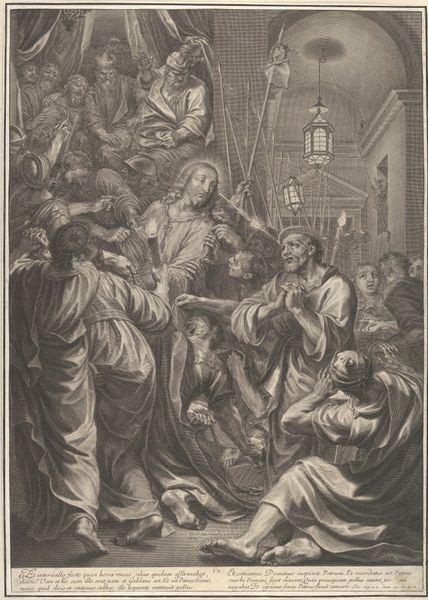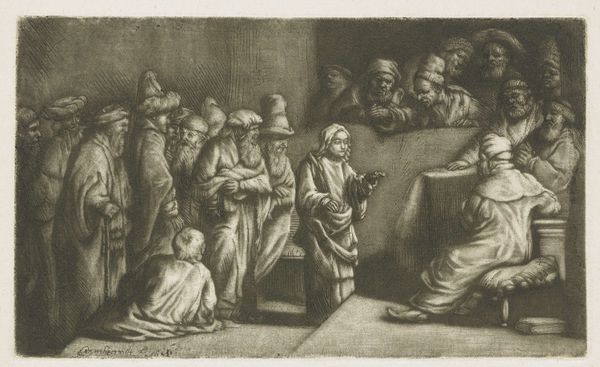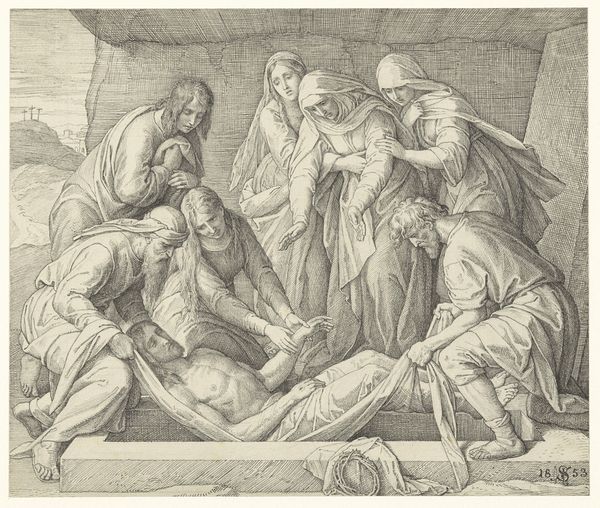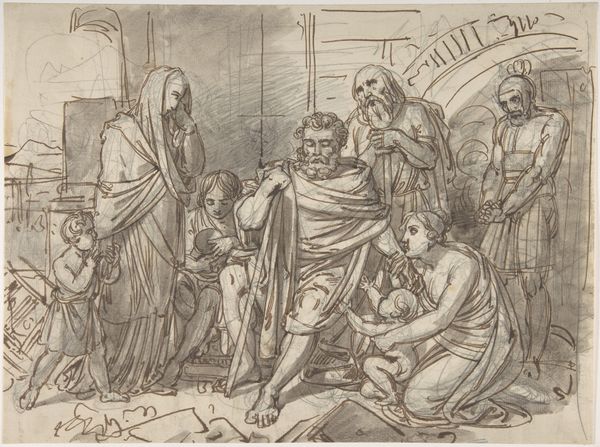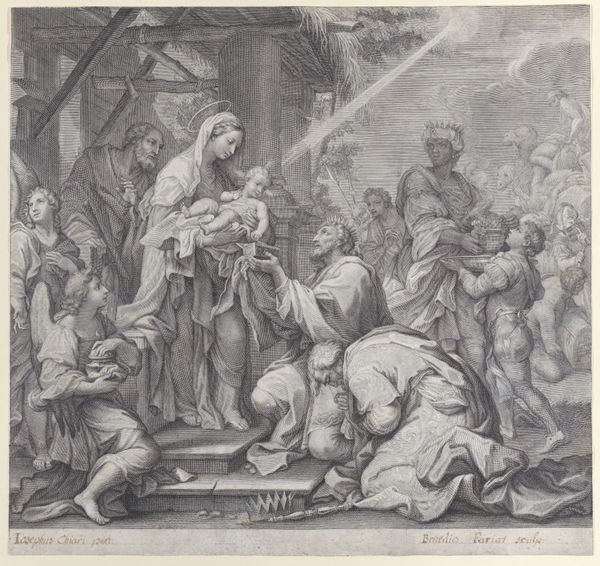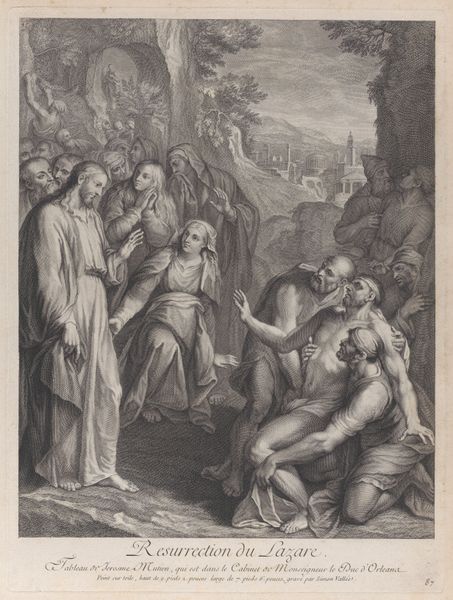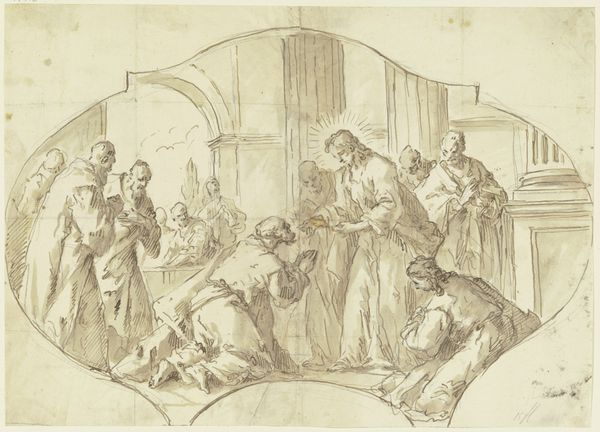
drawing, print, etching, paper
#
portrait
#
drawing
#
narrative-art
#
baroque
# print
#
etching
#
figuration
#
paper
#
group-portraits
#
france
#
portrait drawing
#
history-painting
Dimensions: 262 × 425 mm (image); 288 × 440 mm (sheet, trimmed within platemark)
Copyright: Public Domain
Curator: We're now looking at "The Confirmation," an etching by Pierre Charles Trémolières. Editor: The tonal range is so subtle. I'm struck by the almost ethereal glow emanating from the central figures despite the apparent austerity of the medium. Curator: Indeed. What’s fascinating is Trémolières' ability to capture the grandeur of the moment through simple lines etched onto a copper plate. Consider, for example, how the clothing suggests societal status. Editor: Notice also the visual weight created by the grouping of figures. The careful arrangement draws our eye toward the bishop, literally highlighting his significance in this religious and social ceremony. Curator: The circulation of prints like this in 18th century France highlights a growing accessibility of religious imagery. It offered people a vicarious connection to such important rituals within the church, subtly shaping popular understanding. It really underlines how religious institutions leverage visual narratives. Editor: The artist utilizes line, form and texture in a powerful visual rhetoric. What a beautifully composed piece. Look how the orthogonals are placed to convey this idea. The use of shading too creates space where space does not truly exist. Curator: Agreed. Thinking about the distribution of these prints at the time also leads one to consider the availability of paper, the workshop practices, and economic aspects which also were quite impactful. It reminds us to question who had access to such visual messaging, how their perception of this experience may differ across the socioeconomic strata of French society at that time. Editor: It's been a rewarding investigation. Thank you. Curator: It has, indeed. It invites further reflection on our connection to history and its continuing relevance in contemporary times.
Comments
No comments
Be the first to comment and join the conversation on the ultimate creative platform.

